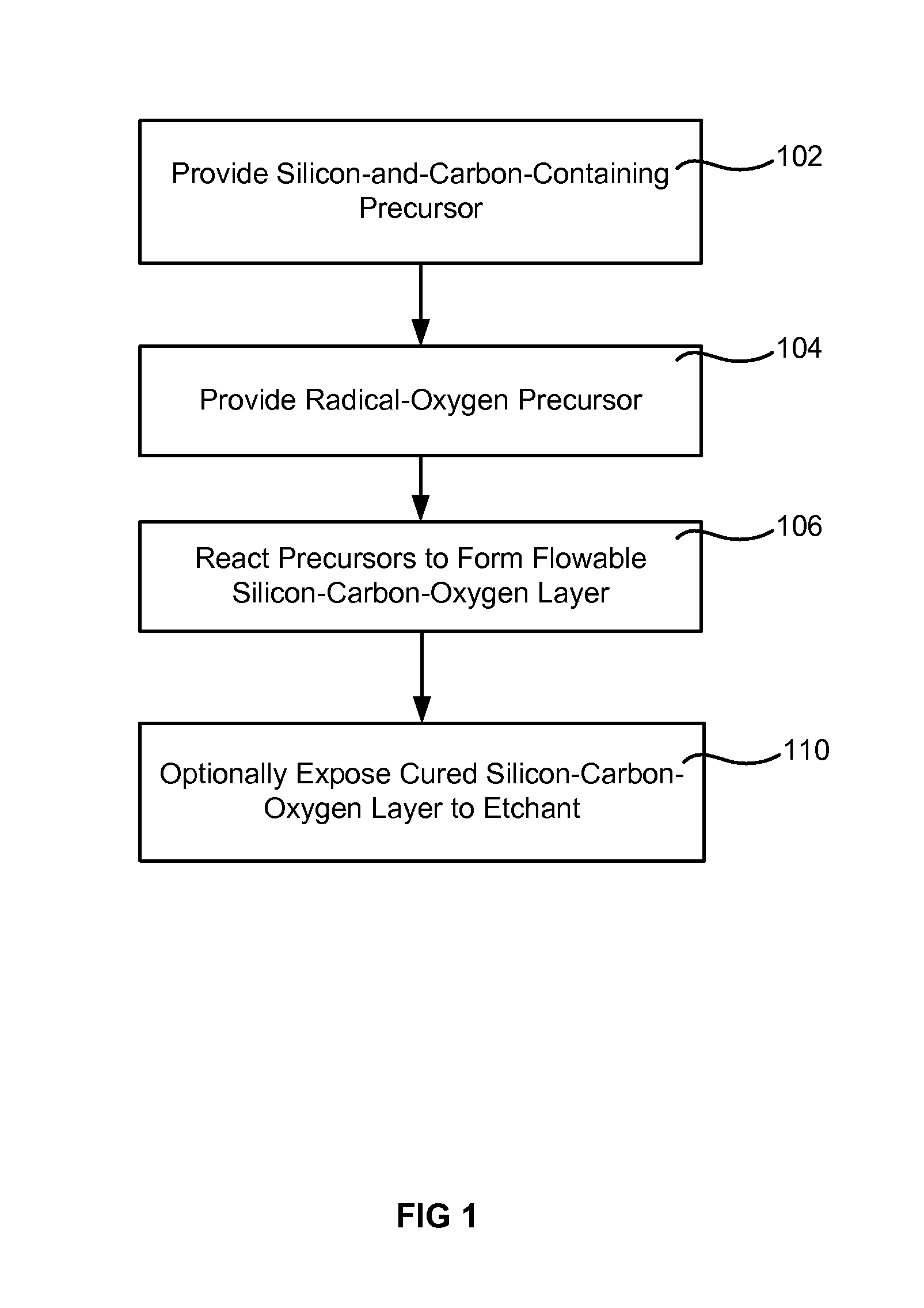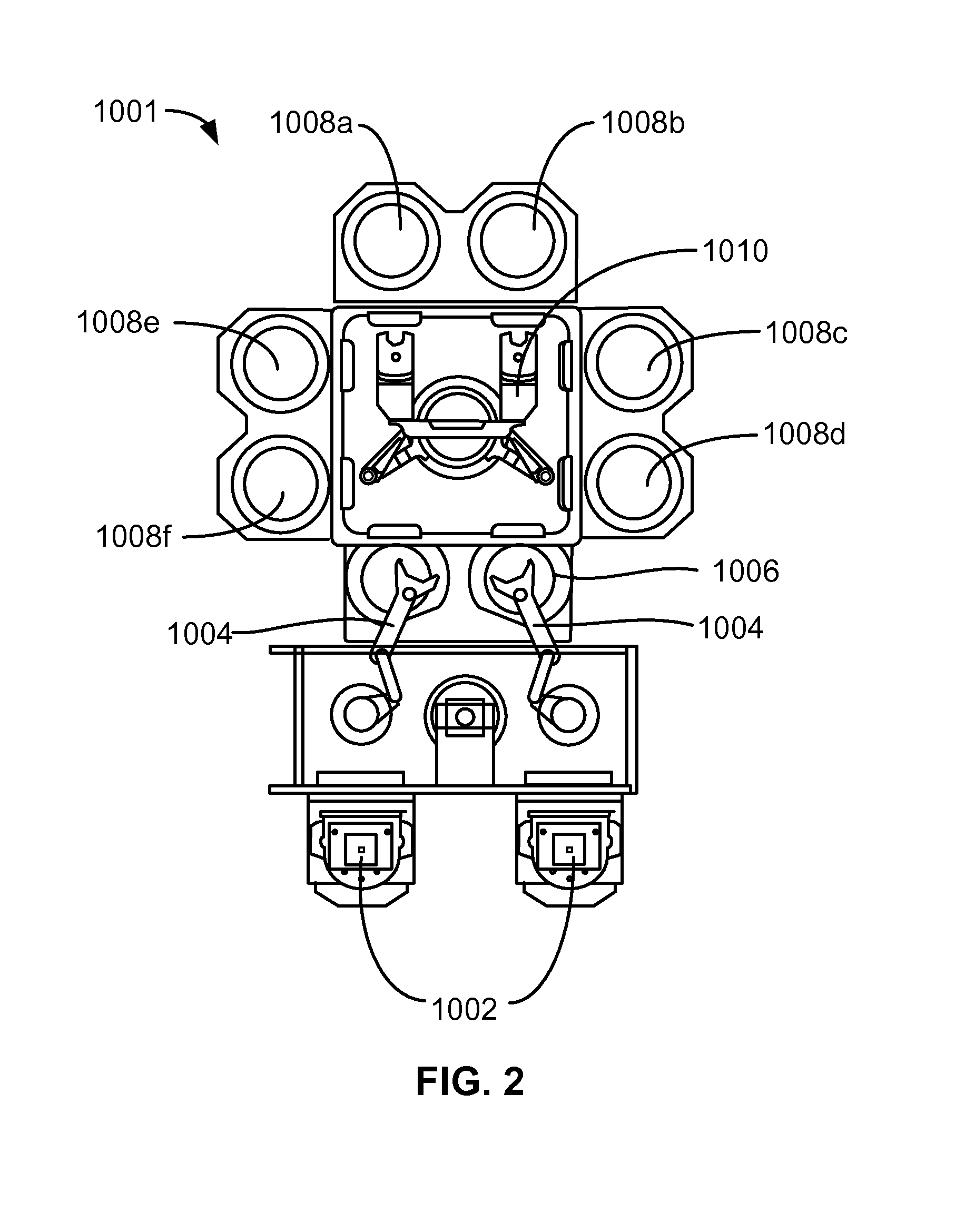Flowable silicon-carbon-oxygen layers for semiconductor processing
a technology of silicon carbon-oxygen and flowable silicon, which is applied in the direction of coating, chemical vapor deposition coating, metallic material coating process, etc., can solve the problems of voids or seams, difficult to fill gaps without dielectric materials, and conventional chemical vapor deposition (cvd) techniques often experience an overgrowth of materials, etc., to achieve better etch resistance, improve etch resistance, and increase etch resistance
- Summary
- Abstract
- Description
- Claims
- Application Information
AI Technical Summary
Benefits of technology
Problems solved by technology
Method used
Image
Examples
Embodiment Construction
[0017]Methods are described for applying flowable CVD techniques to the formation of flowable silicon-carbon-oxygen containing layers.
[0018]The silicon-and-carbon-containing precursors discussed herein have been found to produce silicon-carbon-oxygen films which have a desirably low wet etch rate despite being flowable during deposition. The silicon-and-carbon-containing precursors contain two distinct silicon atoms separated by one or more intermediate, covalently bonded atoms which may be one or two carbon atoms. For example, the silicon-and-carbon-containing precursor may include a Si—C—Si sequence or a Si—C—C—Si sequence. Larger sequences are also possible (e.g. Si—C—C—C—Si or Si—C—C—C—C—Si) and may include atoms other than carbon between the two distinct silicon atoms. The adjective distinct is used throughout to ensure that the two silicon atoms cannot be construed as a single silicon atom in an atomic ring structure. Each silicon-and-carbon-containing precursor must have at l...
PUM
| Property | Measurement | Unit |
|---|---|---|
| temperature | aaaaa | aaaaa |
| sizes | aaaaa | aaaaa |
| sizes | aaaaa | aaaaa |
Abstract
Description
Claims
Application Information
 Login to View More
Login to View More - R&D
- Intellectual Property
- Life Sciences
- Materials
- Tech Scout
- Unparalleled Data Quality
- Higher Quality Content
- 60% Fewer Hallucinations
Browse by: Latest US Patents, China's latest patents, Technical Efficacy Thesaurus, Application Domain, Technology Topic, Popular Technical Reports.
© 2025 PatSnap. All rights reserved.Legal|Privacy policy|Modern Slavery Act Transparency Statement|Sitemap|About US| Contact US: help@patsnap.com



